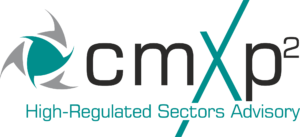In the competitive FMCG sector, especially in food and beverage, crafting compelling claims is key to standing out. Effective claims highlight product benefits and differentiate your brand. However, it’s not enough to make bold claims—every claim must be transparent, ethical, and compliant with local regulations to avoid legal issues, protect your brand, and build consumer trust.
Begin With The End In Mind
Start by considering product positioning, claims, and communication during the ideation phase. This proactive approach helps you create products that deliver genuine benefits and support credible claims.
Define Target Markets Early
Food regulations in Southeast Asia (SEA) vary by country, and most products are launched in one market before expanding to others. Define your target markets early to ensure smooth market entry. List potential markets and determine the required nutrient and ingredient levels for key claims. Use the highest levels needed as a baseline for your formulation.
Next, review approved claims to ensure they align with your product concept. If essential claims aren’t allowed in some markets, reconsider expanding to those regions.
Assessing food regulations early lets you design products that support credible claims across multiple markets and identify regions that pose regulatory challenges.
Best Practices for Balancing Claims, Communications and Compliance
Step 1: List All Regulatory-Approved Claims and Substantiate Them
Review the product’s ingredient and nutrient profile, then compile a list of all regulatory-approved claims:
1. Ingredient-Linked Claims
These claims describe the level or type of ingredient in the product. For example, for plant-based almond milk, potential claims might include:
- vegan or plant-based almond beverage
- made with real* almonds
- made with 5* almonds / x g* of almonds per serving
- made with the best quality^ almonds
- dairy-free
- no added sugar/unsweetened#
- naturally cholesterol-free; lactose-free#
Substantiation
- *Almond content claims must be substantiated with recipe declarations from the R&D team, confirming the specific quantity of almonds used.
- ^A quality certificate from the supplier can verify that the best grade of almonds was used.
- #An ingredients list and lab analysis report can confirm that the product contains no added sugar and is cholesterol/lactose-free.
2. Nutrient Content Claims
These claims describe the level of a nutrient in a food, using terms like “source of” and “high in.” For example, you might claim your product is a “Source of” or “High in” 7 vitamins and minerals, depending on the nutrients naturally present or added.
Nutrient levels required to make a “source of” or “high in” claim differ by country. Use the highest level required across all countries to ensure the content claim can be made in all potential Southeast Asian markets. Occasionally, to reduce costs, it may be necessary to switch from a “high in” claim to a “source of” claim in certain countries. This compromise is acceptable as long as the overall product positioning remains unaffected.
Substantiation:
- R&D must provide detailed nutrient information, including the type and level of vitamins and minerals added.
- Lab analysis reports and shelf-life studies should verify that the product meets regulatory requirements for the “source of” or “high in” nutrient claims in the relevant markets.
3. Nutrient Function Claims
Nutrient function claims describe the physiological role of a nutrient in growth, development, and normal bodily functions. These claims can only be made if the product contains a nutrient level that supports at least a “source of” claim. For example, if a product is fortified with calcium, you might claim, “Fortified with / Source of Calcium. Calcium helps build and maintain bones.”
In some countries, specific function claim statements are predefined, and it is advisable to use the approved or a similar statement. For example, in Malaysia, the approved calcium function claim is “Calcium aids in the development of strong bones and teeth,” while in Singapore, it is “Calcium helps build/support the development of strong bones and teeth.”
While bone health-related claims are important, the product’s positioning must be considered when choosing nutrient function claims. If the product is positioned for fitness and muscle building, you could use additional calcium claims, such as “Calcium contributes to normal energy metabolism” or “Calcium is necessary for normal nerve and muscle function.” However, while these specific calcium function claims are permitted in Singapore, this is not the case in Malaysia.
Given these differences, it is crucial to consider product positioning, approved claims in each market, and which nutrients and nutrient function claims best support the product concept at the ideation stage.
Substantiation:
- A lab analysis report and end-of-shelf-life study confirming that the product contains sufficient levels of the nutrient to support a “source of calcium” claim.
4. Health Claims
A health claim describes the relationship between a food substance and the reduced risk of a disease or health-related condition. For example, in Thailand, you might state, “Docosahexaenoic acid (DHA) and Eicosapentaenoic acid (EPA) contribute to the normal function of the heart” if your beverage contains at least 40 mg/100 ml of DHA and/or EPA.
However, this claim is not approved in all Southeast Asian countries. If you plan to add a novel ingredient with the intention of making a health claim, review local regulations during the ideation stage to assess:
- Whether a health claim is permitted in your target market.
- The required level of the nutrient or ingredient needed to make a health claim.
If health claims are not permitted in a targeted market, consider making a content claim, such as “with x mg of DHA” on the front of the pack. You can then promote the benefits of the novel ingredient through below-the-line communication channels. Again, it is important to assess consumer perception of the ingredient during the concept stage, as a basic understanding of the ingredient’s benefits is crucial for shaping an effective marketing strategy.
Substantiation:
- A lab analysis report proving the product contains ≥40mg/100ml of DHA and/or EPA.
5. Nutrient Comparative Claims
A nutrient comparative claim compares the nutrient levels and/or energy values of two or more foods. The foods being compared should be different versions of the same food or similar types of foods. The comparison should be based on a relative difference of at least 25% in energy value or nutrient content, except for micronutrients, where a 10% difference in the nutrient reference value is acceptable between the compared foods.
For example, in the case of almond milk, some key competitors could be regular milk, soy milk, or oat milk. Examples of comparative claims include:
- “With x% fewer calories than milk”.
- “With x mg or x% more calcium than soy milk or oat milk”.
Substantiation:
- To substantiate these claims, lab analysis reports are required to confirm the calories and nutrient content in the product. Additionally, packaging information confirming the calories and nutrients in at least three popular competitor products sold in the target market is needed.
Step 2: Consider Clinically Proven or Science-Backed Alternative Messaging for Below-the-Line Communications
Not all clinically proven or science-backed benefits can be claimed on packaging. For example, a meta-analysis of 10 studies found that consuming at least 15 ml of apple cider vinegar daily for over 8 weeks significantly improved fasting plasma glucose and blood lipid levels. However, this benefit cannot be claimed on a bottle of apple cider vinegar because the claim has not been approved in many countries.
In such cases, the benefits can be highlighted in brochures, on websites, social media posts, or in the product information section of an online supermarket. A key advantage of online and social media communications is direct access to consumers. But, to maintain compliance, every benefit statement should be supported by credible references. After developing an approved claim list, outline key messaging that can be backed by scientific references, and integrate these messages into your communication plan.
When uploading videos or podcasts featuring scientific experts discussing product benefits, it is crucial to include links to the scientific findings. This approach is essential for building trust with key opinion leaders (KOLs) and consumers. If you use influencers, provide them with science-based talking points to prevent the use of misleading claims.
Summary
In the fast-moving consumer goods (FMCG) sector, particularly in the food and beverage industry, crafting compliant and compelling claims is vital for effective communication and brand differentiation. Claims must be transparent, ethical, and comply with regulatory standards to build consumer trust, avoid legal issues, and protect brand reputation.
Key recommendations for ensuring compliance include considering product positioning, claims, and communication strategies from the ideation stage. This proactive approach supports the creation of products with genuine benefits and credible claims, tailored for multiple markets, especially in Southeast Asia, where food labeling regulations vary widely. Understanding the regulatory landscape of each market is crucial, as nutrient and ingredient requirements for content, function, and health claims differ by country.
If your organization needs support with defining product pipeline strategy and designing nutrition-centric food and beverages, and compiling scientifically-substantiated regulatory approved claims and communications get in touch.
About the Author
Yashna Harjani is co-head at cmXp2, where she co-leads the firm’s counsel in the food, nutraceutical, and supplement sectors. Bio.
About cmXp2
cmXp2 (“Xp2”) is a strategy advisory firm dedicated to supporting organizations operating in high-regulated sectors, specifically: Food & Nutrition, Agriculture & Agri-Food/Aquaculture, Life Sciences, and Global Banking & Markets, Institutional & Corporate Banking.
For organizations in these sectors, Xp2 helps them navigate complex and dynamic regulatory, legal and ethical parameters to define and execute strategies that generate meaningful value, shape opinions, enhance reputation and drive market impact. Our senior partners’ deep sector leadership expertise across these high-regulated sectors is well-placed to help clients succeed.
Xp2 is a division of the award-winning Corporate Media Services Pte Ltd (CorpMedia) that has over 32 years of experience. The firm is headquartered in Singapore and serves the Southeast Asia region.

3 Pickering Street | #02-36 Nankin Row | S048660 | Singapore
www.cmXp2.com | www.linkedin.com/company/cmxp2/








